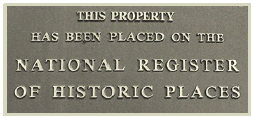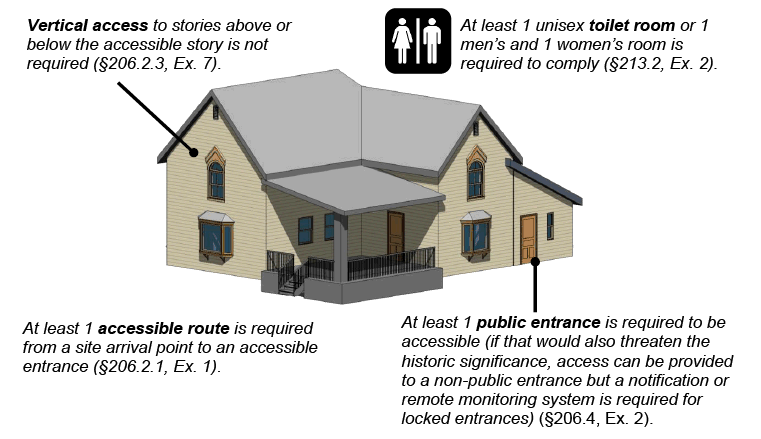Alterations to Qualified Historic Facilities [§202.5]
The standards contain specific provisions for qualified historic facilities which are defined as buildings or facilities that are “listed in or eligible for listing in the National Register of Historic Places or designated as historic under an appropriate State or local law.” Alterations to qualified historic facilities must comply with section 202.5 to the maximum extent feasible. If it is not feasible to provide physical access to an historic property in a manner that will not threaten or destroy the historic significance of the building or facility, alternative methods of access are permitted by DOJ’s ADA Standards (28 CFR 35.151(b)(3)(ii) and 28 CFR 36.405(b)).
Like other existing facilities, the requirements for alterations apply in relation to the scope of work. Alterations provisions and exceptions, including those based on technical infeasibility, and requirements for path of travel to primary function areas, apply to historic facilities with exceptions for circumstances where compliance with the standards would threaten or destroy the historic integrity or significance of a facility as determined by the appropriate State Historic Preservation Official or Advisory Council on Historic Preservation. These exceptions apply to requirements for accessible routes (§206.2) entrances (§206.4), and toilet rooms (§213.2).
Exceptions for Qualified Historic Facilities
(where compliance would threaten or destroy a facility’s historic significance)



User Comments/Questions
Add Comment/Question